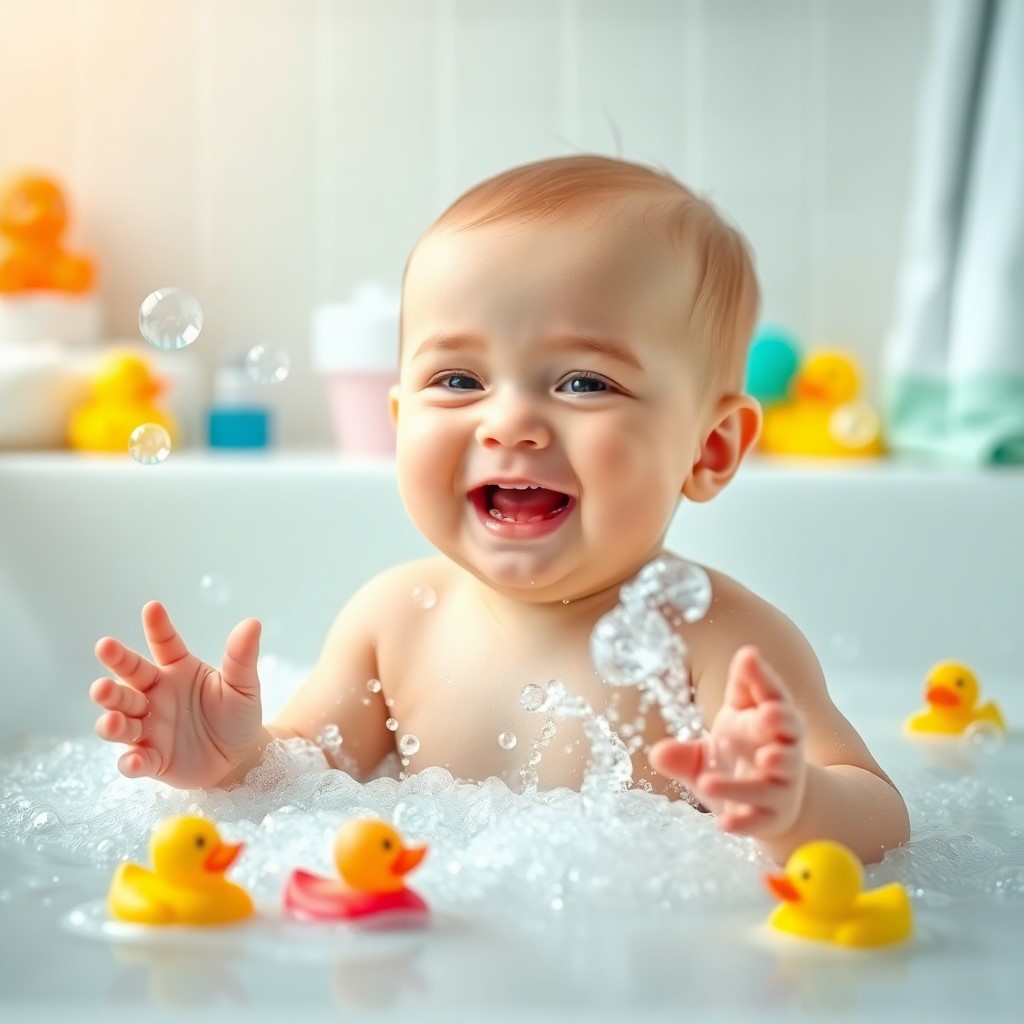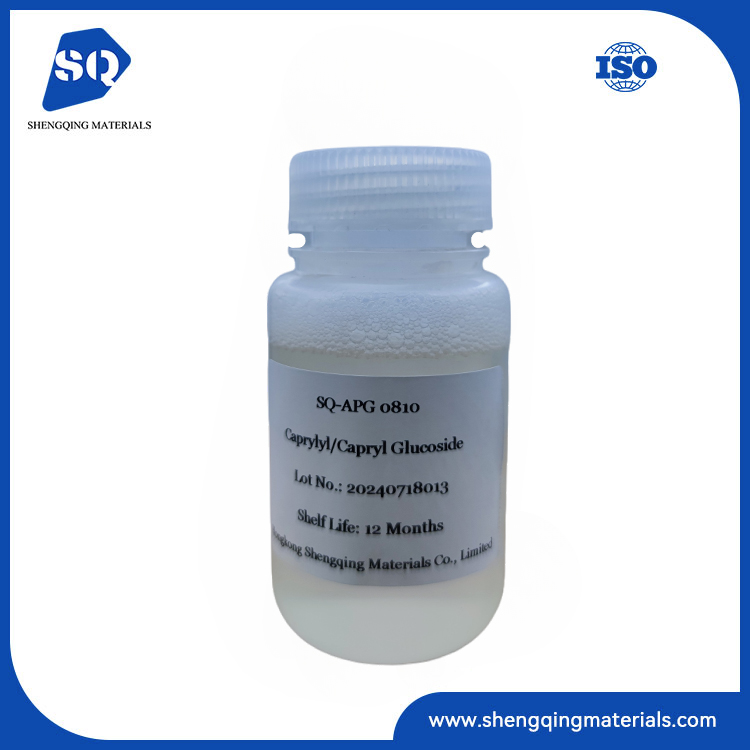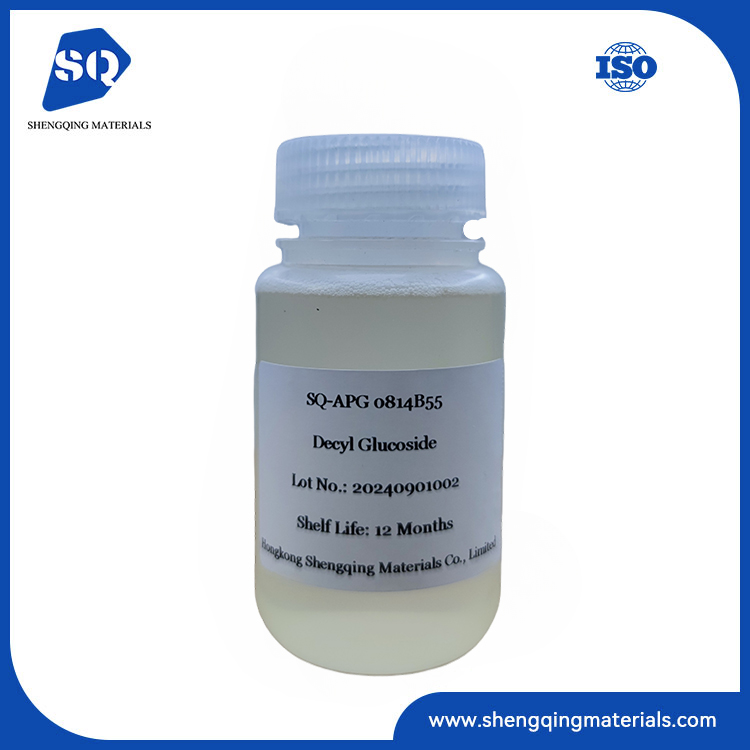The Application of APG Surfactants in Baby Products
2025-01-20
Most babies love to stay in warm water because it reminds them of the cozy, safe environment of the womb. They enjoy splashing and playing in the water. Bathing also provides intimate moments for both the baby and the parents, making it an enjoyable and relaxing experience. However, when water and shampoo get into a baby’s eyes, causing stinging and crying, the bath can quickly turn into a stressful and tearful process.

So, how should we choose baby care products? Here are some key points to consider when selecting baby care items:
1. Choose Tear-Free Formulas
Babies' eyes are more sensitive than adults and are easily irritated. Tear-free formulas are specially designed to minimize eye irritation, preventing babies from feeling stinging or tearing up during hair washing.
2. Gentle Surfactants
Surfactants are the main ingredient in shampoos responsible for cleaning. When selecting baby shampoo, prioritize products that use gentle, low-irritation surfactants.
Recommended ingredient: Alkyl Polyglucoside (APG) is a plant-derived surfactant with low irritation and good cleaning effectiveness, as well as being environmentally friendly (e.g., SQ-APG 818).
3. Sulfate-Free
Sulfates are common cleaning ingredients but can cause skin and eye irritation. Sulfate-free shampoos are gentler and better suited for babies, as they clean without stripping the skin of its natural oils.
4. Moisturizing Ingredients
Babies have drier skin, which can easily lose moisture. Choosing shampoos with moisturizing ingredients helps maintain the skin’s natural moisture, preventing dryness and tightness.
5. Natural Ingredients
Opt for shampoos that contain natural ingredients, such as plant extracts and natural oils. These ingredients are generally gentler and cause less irritation to the skin.
6. pH Suitable for Baby Skin
Baby skin typically has a pH range of 4.5 to 6.5, which is closer to neutral compared to adult skin. Choosing shampoos with a mild pH helps minimize damage to the skin barrier.
Today, the market offers a wide range of cleaning products for babies and children. Besides the gentleness that parents desire for their baby’s sensitive skin, they often prefer products that leave the baby’s skin feeling clean, fresh, and soft. To meet these needs, ingredients used in these products must be carefully selected. The ultra-gentle tear-free formula should contain surfactants that are milder than those used in some adult shampoos. Key steps in developing a gentle tear-free baby care formula include testing the eye irritation potential of selected surfactants to identify those with suitable gentleness.
Among the tested surfactants, six were found to have sufficiently low irritation potential and are considered suitable for formulating tear-free baby cleaning products. Among them, Alkyl Polyglucoside (APG) surfactants, such as SQ-APG 818, combine significantly low eye and skin irritation potential with effective cleaning performance. They provide not only gentleness but also environmental friendliness for baby care products. APG is derived from renewable plant-based materials (such as plant oils and starch), offering a solution to safety and environmental concerns that consumers are increasingly focused on.
APG Surfactant (Alkyl Polyglucoside) is a type of non-ionic surfactant with good biodegradability, low toxicity, and mild cleaning properties. Due to its mildness and skin-friendliness, APG is widely used in baby care products, especially in baby shampoos and baby formula production.
Features of APG Surfactant
• Gentleness: APG is highly gentle and does not cause irritation to the skin and eyes, making it ideal for baby care products and sensitive skin care products.
• Good Biodegradability: APG is synthesized from natural raw materials (such as glucose and plant-based fatty alcohols), which can easily be degraded in the environment, meeting environmental requirements.
• Low Toxicity: Compared to traditional surfactants, APG has lower toxicity to the human body, making it suitable for widespread use in daily care products.
• Effective Cleaning: APG can effectively remove dirt and oils, providing good cleaning performance and good compatibility with water.
Application of APG Surfactant
• Personal Care Products: such as body washes, shampoos, facial cleansers, baby cleaning products, etc.
• Household Cleaning Products: such as laundry liquids, kitchen cleaners, etc.
• Food Industry: APG can also be used in some food processing as an emulsifier or stabilizer.
• Cosmetics: Used as a gentle cleaning ingredient in facial cleansers and toners.
Common APG Models
1. APG 818 (INCI: Coco Glucoside): Made from an 8-carbon alkyl (C8) and glucose, suitable for mild formulations. It typically has good solubility and lower foam capacity. Widely used in gentle baby products, sensitive skin care products, skincare, and cleaners.
2. APG 1214 (INCI: Lauryl Glucoside): Made from 12 to 14 carbon alkyl chains and glucose, providing stronger cleaning power and better foaming. Suitable for products requiring stronger cleaning abilities, such as shampoos, dishwashing liquids, and laundry liquids.
3. APG 0810 (INCI: Caprylyl / Capryl Glucoside): Made from an 8-carbon alkyl group, similar to APG 818, with high solubility and effective cleaning. Suitable for mild cleansers, baby products, and skincare products, commonly used in personal care.
4. APG 0814 (INCI: Decyl Glucoside): Made from C8-10 alkyl chains, offering moderate foaming, more foam than APG 818 but still gentle, with slightly stronger cleaning ability. Suitable for baby products, face washes, shampoos, body washes, and mild cleaners.
Formula Recommendation: “Moisturizing Tear-Free Shampoo and Body Wash”
This is a perfect blend of APG and commonly used surfactants. This specific formula offers excellent, mild cleaning performance while maintaining good foaming properties. It is suitable not only for babies but also for adults looking for gentle solutions that provide extra sensitive care without compromising on foam and cleaning performance.
| Phase | INCI Name | SQ Ingredients | W/W % | Function |
| 1 | Water | Water | 71.6 | |
|
|
Polyquaternium-10 | SQ-QUAT 400 | 0.2 | Active, hair conditioning |
| 2 | Sodium Myreth Sulfate | 11 | Surfactant | |
|
|
Coco-Glucoside | SQ-APG 818 | 5 | Surfactant |
|
|
Coco-Glucoside (and) Glyceryl Oleate | 5 | Active, skin conditioning | |
|
|
Parfum | 0.15 | Perfume | |
|
|
Sodium Benzoate | 0.55 | Preservative | |
| 3 | Cocamidopropyl Betaine | SQ-CAPB 35 | 5 | Surfactant |
|
|
Mel Extract (EU); Honey Extract (US) | 1 | Active, moisturizing | |
|
|
PEG/PPG-120/10 Trimethylolpropane Trioleate (and) Laureth-2 | 0.5 | Agent, thickening | |
| 4 | Sodium Chloride | Sodium Chloride | q.s. | Agent, thickening |
| pH-value (as is) | ~5.0 | |||
| Viscosity (Brookfield RVT, 23°C, spindle 4, 20rpm) | ~6, 700 mPas | |||
|
Procedure: 1.Mix components listed under phase I and homogenize. 2.Add the ingredients of phase II and stir until homogeneous. 3.Mix the substances listed under phase III and add to phase I and II. 4.Finally, adjust the pH value and add NaCl. |
||||
| The mentioned amount of sodium chloride and citric acid is approximate. | ||||





